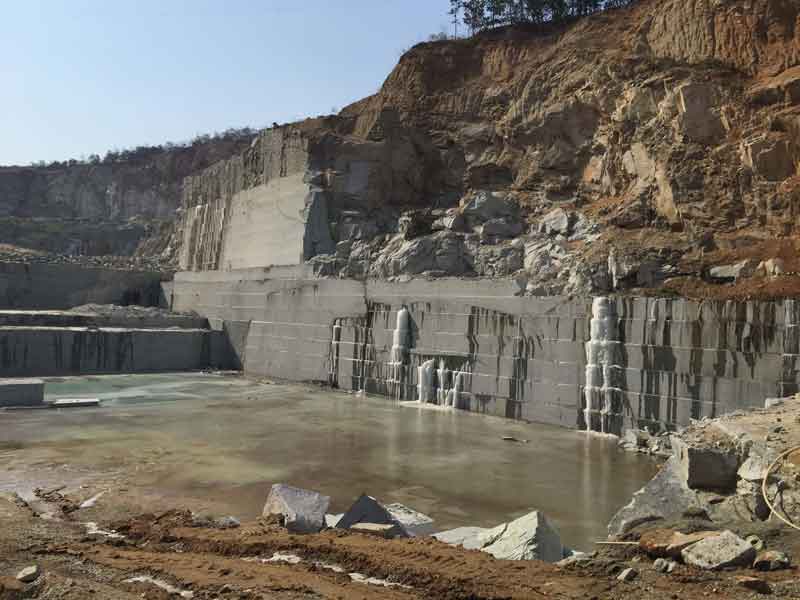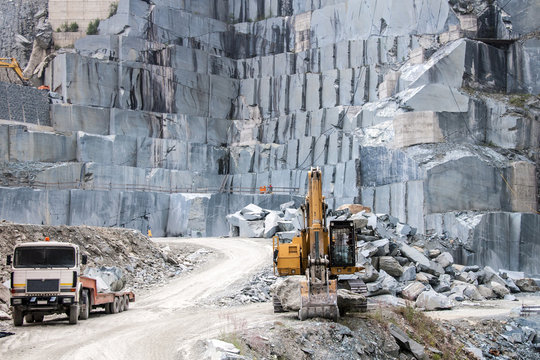Journey Into Rustenburg's Geological Wonders: Granite Quarries in Rustenburg
From Quarry to Countertop: Comprehending the Refine of Granite Extraction
Granite, a prominent choice for kitchen counters because of its sturdiness and aesthetic allure, undertakes a fascinating journey from the depths of a quarry to its final destination in our restrooms and cooking areas. As we explore the elaborate process of granite extraction, we will reveal the secrets behind the development of these majestic stone down payments, discover the strategies and devices employed in quarrying, and decipher the steps associated with transforming raw granite blocks into polished and ended up counter tops. From the geological origins to the meticulous craftsmanship, this journey assures to reveal the remarkable story behind the development of these ageless and practical items.
Development of Granite Deposits
The formation of granite down payments is a geologic process that includes the gradual air conditioning and solidification of magma deep within the Planet's crust. Granite, an usual kind of igneous rock, is developed when molten magma cools off and solidifies over extended periods of time. This procedure takes place under the Earth's surface area, generally at depths of several kilometers.
These minerals incorporate to give granite its characteristic appearance and look. The slow-moving cooling procedure allows for the development of large crystals, which provide granite its distinct rough appearance.
The formation of granite down payments is often associated with tectonic activity, such as the collision of continental plates or the ascent of magma from the mantle. The extreme warm and pressure generated throughout these procedures contribute to the melting of rocks and the subsequent development of lava.
Over millions of years, the strengthened granite is exposed at the surface via disintegration and uplift. This is when granite deposits can be quarried and extracted for numerous applications, including kitchen counters, floor covering, and building materials.

Quarrying Methods and Tools
Quarrying strategies and tools play an essential function in the reliable removal of granite deposits for different commercial applications. The procedure entails making use of specialized tools and machinery that guarantee the safe and smooth extraction of granite obstructs from the quarry site.
Among the key methods utilized in granite quarrying is piercing (granite quarries in rustenburg). This entails using exploration devices outfitted with diamond-tipped drill bits. These makers develop holes in the rock surface area, permitting the insertion of explosive costs. Once the fees are detonated, the resulting surge breaks the granite into convenient blocks.
Along with exploration, reducing and splitting devices are additionally vital in granite quarrying. Wire saws and high-pressure water jets are typically made use of to puncture the granite. These approaches work in separating the granite right into specific blocks, which can then be additional processed.
Carrying and filling devices are important in the transportation of granite blocks from the quarry to the processing center. Sturdy vehicles and forklifts are generally used to move the blocks, ensuring their reliable and risk-free transfer.

Extraction and Transportation of Granite Blocks
With the conclusion of the quarrying methods and tools section, we currently transform our attention to the crucial procedure of removing and delivering granite blocks. As soon as the granite has actually been efficiently quarried, it is required to extract the blocks from the quarry face. This is typically done using heavy machinery, such as excavators or front-end loaders, which are equipped with huge blades or rippers to break the blocks free from the surrounding rock.
After the blocks have actually been drawn out, they need to be delivered to the processing center. This is generally done using specialized trucks or trailers that are qualified of lugging the enormous weight of the granite blocks. These transportation lorries are designed to make sure the efficient and risk-free movement of the blocks, with attributes such as enhanced structures, hydraulic systems, and safe tie-downs.
The transportation procedure calls for mindful preparation and sychronisation to guarantee the blocks reach their location without damage. This entails selecting the suitable paths, taking into consideration aspects such as road problems, weight limitations, and the size of the blocks. It is likewise critical to protect the blocks properly during transport to stop sliding or changing, which can lead to mishaps or damages to the blocks.
Trimming and Shaping Granite Pieces
To create sleek and exact granite pieces, a meticulous process of forming and cutting is used. As soon as the granite blocks have been drawn out from the quarry and transported to the facility, they are all set to undertake this vital action.
After the preliminary cutting, the pieces are then shaped to fulfill the desired check out here specifications. This is done using a combination of saws, mills, and sprucing up tools. The edges of the slabs are smoothed and rounded, providing them a finished and refined appearance. The surface of the slabs is likewise brightened to accomplish a shiny and reflective finish.

Polishing and Finishing the Granite Countertops
The final action in the granite extraction process includes the thorough polishing and ending up of the granite counter tops. After the granite slabs have actually been reduced and shaped to the preferred dimensions, they undertake a series of therapies to improve their look and longevity.
The very first stage of the brightening procedure is called grinding. During this phase, crude diamond abrasives are utilized to eliminate any kind of blemishes and smooth the surface area of the granite. granite quarries in rustenburg. This process is crucial for attaining an uniform and level surface
Once the grinding is complete, better diamond abrasives are used to more fine-tune the surface visit this page of the granite. This highlights the natural beauty of the stone and gives it a glossy and reflective look.
After the polishing phase, the granite kitchen counters are thoroughly cleaned up to eliminate any kind of dirt or debris. This is followed by the application of a sealer, which aids shield the stone from discolorations and scrapes.
Conclusion
In final thought, the procedure of granite extraction entails different phases, including quarrying, removal, transport, reducing, shaping, polishing, and finishing. Granite down payments are created over millions of years with geological procedures.
As we dig right into the elaborate procedure of granite removal, we will discover the secrets behind the formation of these majestic stone down payments, check out the strategies and equipment used in quarrying, and unravel the actions involved in transforming raw granite blocks right into brightened and finished counter tops (granite quarries in rustenburg). These methods are reliable in separating the granite into specific blocks, which can after that be further processed
With the conclusion of the quarrying techniques and devices area, we now turn our interest to pop over here the critical process of delivering and removing granite blocks.To create accurate and refined granite slabs, a precise process of shaping and cutting is employed.In final thought, the process of granite removal entails various phases, including quarrying, removal, transportation, reducing, forming, brightening, and ending up.